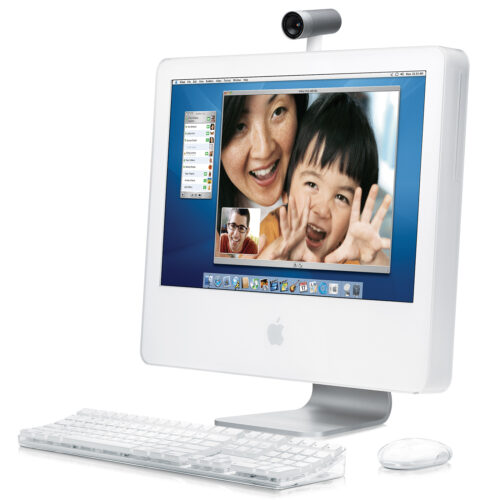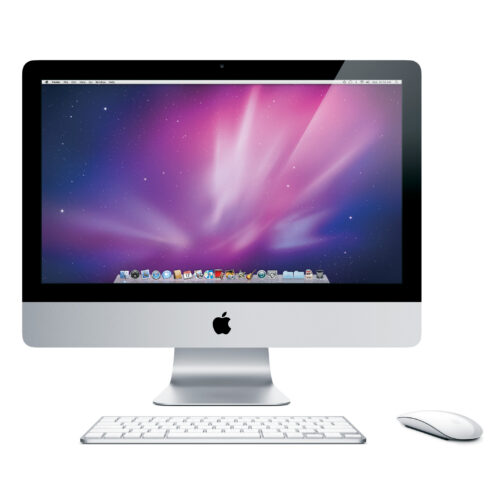Since the introduction of the iMac G5 way back in August of 2004, the basic building blocks of what makes an iMac an iMac have been the same:
From the front, it’s rather remarkable how little the iMac has changed in nearly two decades. The screen is front and center, surrounded by a bezel with a chin below the display. The whole thing is mounted on a foot that lets a user tilt the entire computer easily.
Over the years, Apple has used the chin area for various things. In the first generation of iMac G5, the power supply and speakers were down there:
![]()
When the white iMac picked up an integrated iSight camera — and later an Intel processor — the layout was a little different. The machine was now opened through the front, not the back, and the logic board extended down to the bottom of the chassis, with the screen mounted in front of it.
This has been the layout of iMacs ever since. The enclosure has been upgraded from plastic to aluminum — and the screen has been covered then later bonded to a sheet of cover glass, but the basic way an iMac goes together hasn’t changed in a long time.
With a design as long in the tooth as the iMac’s, it is easy to understand why so many people expected the next generation of iMac to have much smaller bezels and ditch the chin all together.
Sure, the chin had its place for years, holding the guts of the iMac in place, and its Apple logo being a window for things like the now-forgotten Front Row Remote, Mac fans have been ready to move on.
The new iMac is here, complete with a chin:
![]()
It’s smaller than ever now, and lacks an Apple logo,1 but it still present, defiant and proud.
Like before, the chin still has a reason for being. Apple even showed it off during the iMac’s introduction.
The machine’s tiny logic board, two small fans and the improved speakers are all housed in that chin, with the 24-inch display sitting above these internals, not in front of them. All of this adds up to an iMac that’s just 11.5 mm thin, the same as the original iPhone.
![]()
Some would argue that Apple should have made the new iMac chinless and thicker, moving these components behind the display,2 but that’s not the product the company chose to ship.3
I am sure there a million reasons for this design choice that we will never know, but there’s one that I think we do:
iMacs have chins.
- While the lack of an Apple logo looks weird now, in time we’ll all get used to it and think that iMacs with the logo look weird, if not even gaudy. ↩
- This may have also allowed them to put the headphone and Ethernet ports on the back, but that’s not really the point here. Even though I hate that this thing comes will an external power brick. ↩
- Others have questioned the finish used on the chin. The chin on the new iMac matches the finish on its foot, which is less saturated than the sides and the back. It’s an interesting effect that I personally like. The white bezels on the other hand, I’m not so sure about. ↩



